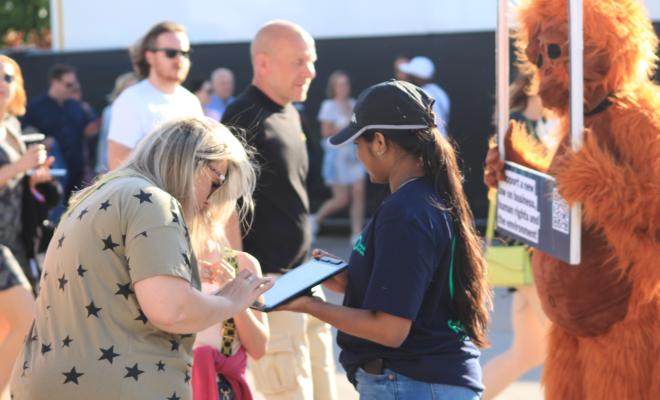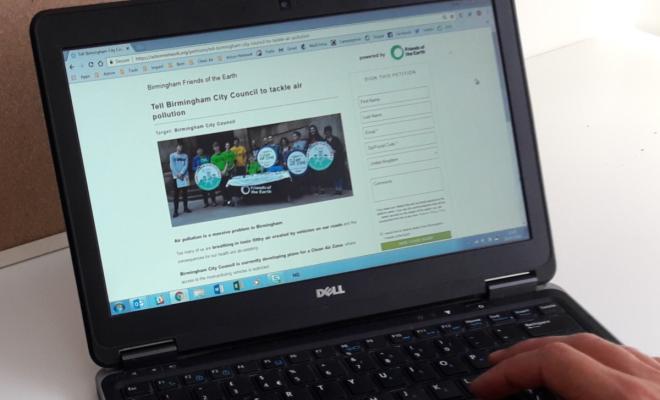03 Dec 2025
Here's our step-by-step guide to building an effective and engaging petition in the digital world. Download our template to help you get started.
Use a verb and target in your title
The title of your petition is the first thing people see. It's your chance to highlight the change you're calling for.
Explain who you're trying to influence by naming your target within your petition title. The most effective petitions also include a verb to give people a sense of agency in your campaign.
Keep the title brief – ideally 10 words or fewer. It'll be used when your petition is shared on social media so it needs to make sense when read on its own.
Good examples:
- Tell Brighton and Hove Council to sort out recycling on our beaches
- Call for Newcastle City Council to create a climate action plan
- Ask the Mayor to clean up Bristol's toxic air pollution.
Tell your story
Storytelling is an age-old way to deliver a message. Here are some key ways to tell a good story.
- Make it personal by introducing a character as the face of your petition. Do you know someone local who could tell their story and explain how they’re affected?
- Talk about goals and obstacles. Who or what stands in the way? What happens if you lose?
- Cut out irrelevant detail. Use a few key facts or statistics but don’t go overboard. Think about whether it makes sense to someone who knows nothing about the issue. Avoid acronyms.
Add a sense of urgency
In a world of competing priorities, your petition needs to stand out. You need to show why the reader should take action now, rather than at a later date or not at all.
If the deadline to submit your petition is coming up soon, then say so. How many signatures do you need to hit your target?
Show how change happens
You can motivate people into taking action by showing the effect it'll have. You just need to show them the way.
- Start with the end goal of your petition and then point out the different steps on the path to reaching it.
- Highlight the key milestones that people can help achieve.
- Make sure you clearly outline the problem and what needs to be done to fix it.
Pick a powerful image
A great photo captures the emotion of your petition and tells a story in an instant. Like your title, your image will be the first thing people see.
Not every petition needs an image. But if you’re going to include one make sure it serves a purpose and is relevant. Your image needs to complement and reinforce your petition title and its story.
Photos of people work well. Make sure you have permission to use the image and use a large file size so that it looks good on all screens. Check out our good photos guide for more info.
Keep it brief
A well-written petition can be short or long. But the more you write, the greater the chance people will switch off before they’ve added their name.
Aim for 150-200 words and you’ll be in a good place. Imagine you’re reading your petition on a mobile phone during a busy moment when other things are happening around you. Would you read much more?
Bold a few key phrases or sentences – it'll help people quickly scan your petition and understand the story.
Avoid using links – links to other pages on your petition page risk people leaving and not coming back.
Don’t try and include everything – most online petition platforms have a "thank you" stage – an automated email people receive after signing and a webpage they're redirected to. Use these to share facts, stats and links that don’t fit on the petition page itself.
Write as you talk
Just because something matters to you, the writer, it doesn’t mean it matters to the reader. The best petitions use reader-centred writing to help people connect with the story being told.
Here are a couple of examples. Which version feels more personal and persuasive to you?
"We urgently demand Bigtown Council implements a better recycling system on the seafront and develops a comprehensive recycling strategy to tackle low recycling rates. Sign our petition."
or
"Can you be part of a people-powered movement in Bigtown and help persuade the council to install recycling bins on the beach? If 500 of us sign the petition, then Bigtown Council will have to listen.
Your signature could make a real difference, so please take 2 minutes and add your name today."
Time to get started
Writing a great petition takes time and practice. Don’t expect to get it right every time and do ask for help.
Use our template to break it into simple steps and ask others in your group for their thoughts. Contact us for feedback on your petition – we're here to help.
If you're ready to create your petition, why not try using Action Network? It's a digital platform designed to support your local campaigning.
Promote your petition
When your petition's ready, here are some tips to get people to sign it:
- Social media – post on Facebook with the message "please share". Share on Twitter using popular and local hashtags. Tag or message local accounts to ask them to share it. See our social media guide.
- Email – ask your mailing list to share with their contacts. See our guide to writing an effective email. Make it easy by including a shareable link to a tweet or Facebook post.
- Local media – send a letter to the editor, issue a press release or set up a photo opportunity. Create a short link for your petition so it's easier to print. bit.ly and tiny.url work well.
- Public stall/event – get signatures at local events. Use paper sign-up sheets or take along a tablet or laptop.





